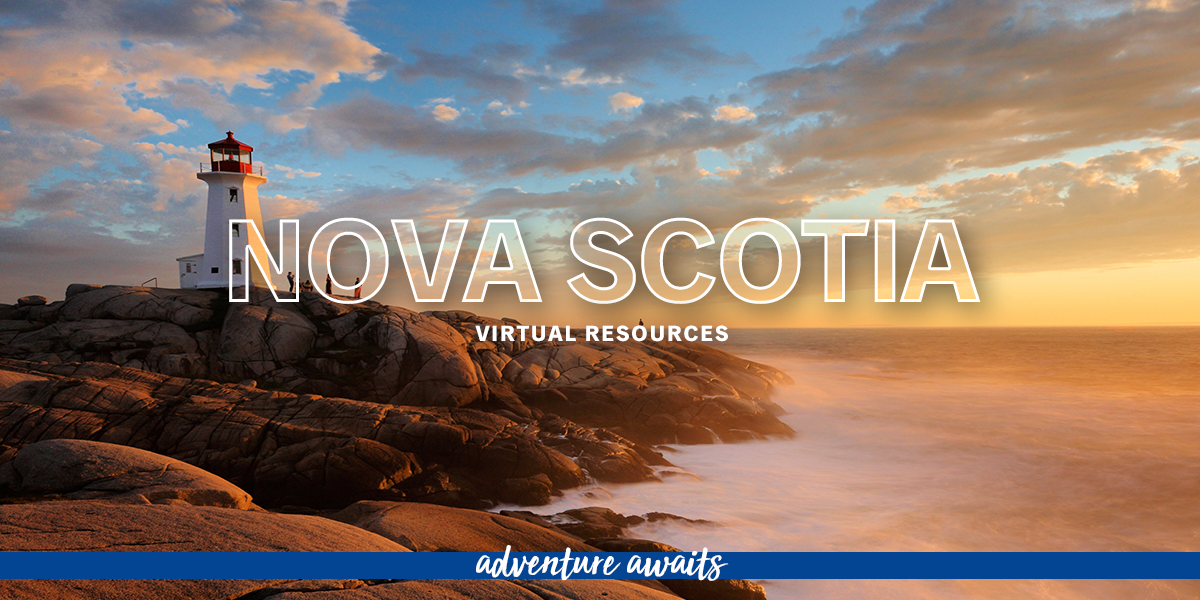Learn the province
Both Nova Scotia’s provincial flag and coat of arms bare resemblance to those of Scotland. At the centre of Nova Scotia’s coat of arms is a shield. On the left side of the shield is a unicorn, which is Scotland’s national animal. On the right is an Aboriginal hunter representing the local population. Centered above the shield are two joined hands, one with armour the other without. The armored hand has a sprig of laurel, meant for peace, while the naked hand has a thistle, which is Scotland’s national flower.
Nova Scotia’s provincial flag has a white background with a blue satire diagonally across to each of the flag’s four corners. Centered in the middle is the royal arms of Scotland, which includes a red lion on a golden field.
Study some history
Dive deep into the history of Nova Scotia and some sites you’ll visit on tour. Consider visiting the 17th century French fortress of Louisbourg, a national historic site allows visitors to step back in time and experience drills from French soldiers such as loading and firing a cannon. You can also learn and experience some of Nova Scotia’s important maritime history by visiting the replica of a ship called the Bluenose, which was a racing boat that remained undefeated for 17 years.
Get creative
Organize your art supplies and get painting! Pick a location you’ll visit on your trip and compare your artwork to photos of the location when you return. Consider painting the skyline trail in Cape Breton Highlands National Park or Lunenburg, a designated UNESCO World Heritage site.
Pick a film
Watch a movie or TV show that was filmed in (or relates to) your destination. Some ideas for Nova Scotia include:
- Maudie (2017)
- Across the Line (2015)
- Goon (2012)
Understand the culture
The cultural life of Nova Scotia is rich and diverse which reflects upon the colourful history of the province. In the last few decades, there has been a revival of interest for traditional Celtic music. Gaelic clan gatherings also take place at St. Anne’s, where residents celebrate Highland fold arts.
Examine the economy
Nova Scotia has a diverse economy based on both land and sea resources. Traditional industries such as fishing, mining, and forestry are in decline whilst tourism and other service industries are becoming the province’s top industries.
Master the language
In Cape Breton, there are approximately 2,000 people speak Scots Gaelic on a daily basis.
Did you know?
The Bay of Fundy, located between New Brunswick and Nova Scotia, is home to the world’s highest tides. The difference between high and low tide is nearly 16 metres, or taller than a 3-story building.

